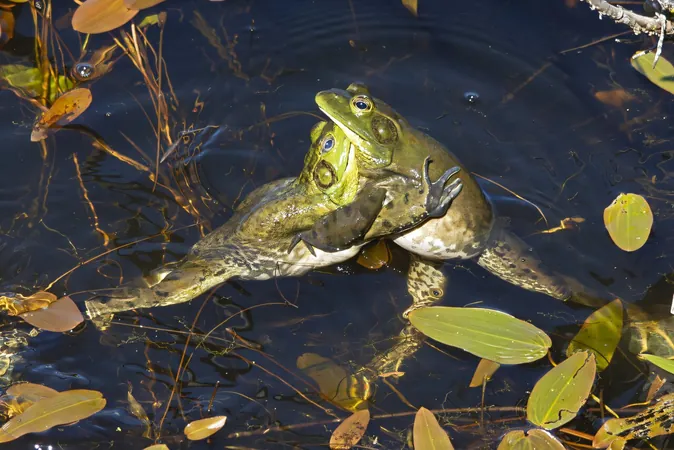
The Hidden Costs of Animal Battles: More Than Just Scratches and Bites!
2025-07-16
Author: Jacques
The Dilemma of Animal Conflicts
Have you ever wondered what drives animals to fight? From the fiercest predators to the tiniest insects, conflicts are a part of life. While most research has focused on the immediate fallout of these clashes, a pair of behavioral ecologists are urging us to look beyond just the surface.
Long-Term vs. Short-Term Impact
In a groundbreaking opinion piece in Trends in Ecology & Evolution, ecologists Paulo Enrique Cardoso Peixoto and his colleague argue that understanding the long-term consequences of these conflicts is crucial. They believe that to grasp the full effect of animal fighting, we must consider how these skirmishes influence an individual’s lifespan and reproductive success over time.
Why Do Animals Fight?
Fights in the animal kingdom can often be symbolic, involving little actual contact, but they still come with a hefty price tag. Engaging in battles can drain energy and lead to severe injuries or even death. Animals typically clash over essential resources like food, territory, or mates.
Strategy Over Bravery
The researchers suggest animals have evolved various strategies to assess when to engage in fights. These strategies can differ widely depending on the species and circumstances. For life-sustaining resources, risks might be worth taking, but the calculus changes dramatically for less critical gains.
The Consequences of Injury
Consider this: if a snapping shrimp loses a claw, it's not a death sentence; it can regrow. However, if a beetle loses its horn, that's it for fighting—and for mating opportunities too. The stakes differ greatly among species.
A Comprehensive Review of Impacts
Peixoto and his team conducted a meticulous review, analyzing 73 studies across 62 species, identifying 24 unique costs associated with fighting. They categorized these into six key types, including metabolic costs, heightened stress, and decreased parenting efforts.
Challenges in Research
One major finding? The wide range of costs researchers measure creates confusion. For instance, studies on fish often focus on metabolic tolls, while insect studies tend to document physical injuries. This inconsistency complicates comparisons between species.
Moving Forward: A New Approach
Peixoto advocates for a three-step approach to studying the impacts of conflicts. First, identify the key costs for the species. Next, measure how costs stack up during fights, and finally, correlate this data with long-term reproductive success.
Unlocking Evolutionary Insights
By linking short-term fight data to long-term performance, scientists could unravel the evolutionary strategies animals adopt. Do aggressive fighters fare better in life, or do cautious contenders ultimately succeed?
This research could reshape our understanding of animal behavior and help explain the complex choices animals make when it comes to survival and reproduction. The battlefield of nature is more complex than we ever thought!









 Brasil (PT)
Brasil (PT)
 Canada (EN)
Canada (EN)
 Chile (ES)
Chile (ES)
 Česko (CS)
Česko (CS)
 대한민국 (KO)
대한민국 (KO)
 España (ES)
España (ES)
 France (FR)
France (FR)
 Hong Kong (EN)
Hong Kong (EN)
 Italia (IT)
Italia (IT)
 日本 (JA)
日本 (JA)
 Magyarország (HU)
Magyarország (HU)
 Norge (NO)
Norge (NO)
 Polska (PL)
Polska (PL)
 Schweiz (DE)
Schweiz (DE)
 Singapore (EN)
Singapore (EN)
 Sverige (SV)
Sverige (SV)
 Suomi (FI)
Suomi (FI)
 Türkiye (TR)
Türkiye (TR)
 الإمارات العربية المتحدة (AR)
الإمارات العربية المتحدة (AR)